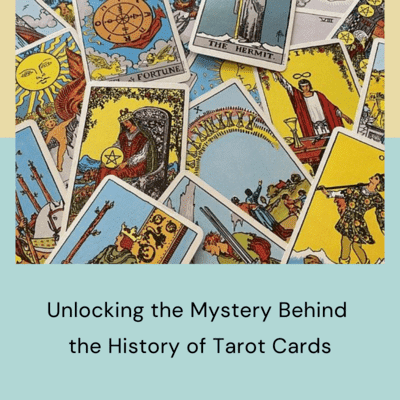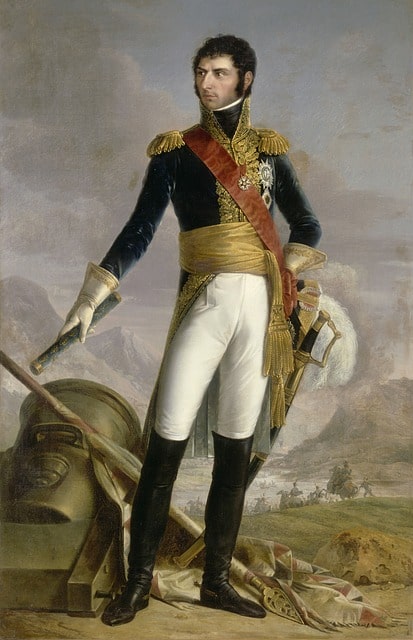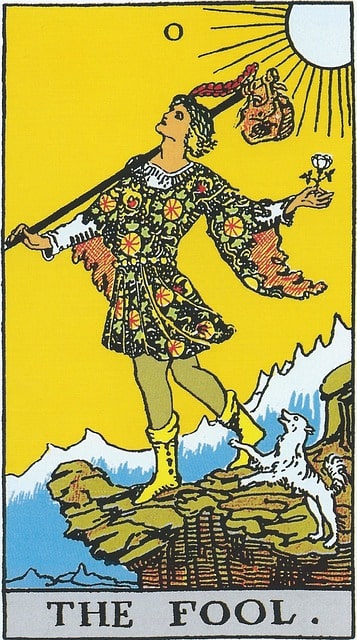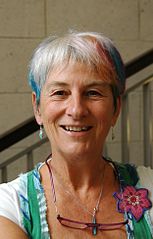
Tarot cards have been around for centuries. But up until now few know and truly understand the mystery, magic, and history of tarot cards. Join us as we unveil how it all began as we take you on a mind-boggling journey that dates as far back as the 15th century. Not only will you discover the history behind tarot cards, you’ll also have long-awaited answers to your most burning questions:
- When were tarot cards invented?
- Where did tarot cards come from?
- What brought about the origin of tarot cards?
- How accurate is the tarot history we know today?
- Why do stories of tarot cards origin vary?
So let’s go ahead and discuss the not-so-brief history of tarot cards!
The (Not-So) Brief History of Tarot Cards
We start off this not-so-brief history of tarot cards by saying that the tarot has tumbled its way in this world for hundreds of years. It is a tantalizing blend of beauty and mystery. Filled with ancient symbols and potent images. They have predicted the countless rise and fall of kingdoms and empires. Associated with ancient mystical systems, the history of tarot cards is as mysterious as their power source.
Have you ever wondered how a deck of cards has the ability to probe the past and unlock secrets of our future? How exactly do tarot readers use captivating card images to unravel one’s deepest and darkest secrets? You see, the tarot is far beyond a set of beautiful cards. This is a divination system, a way of revealing the unknown.
By penetrating deception and mystery, it gives answers about the past, present, as well as hints about the future. Millions of people around the world have discovered the uncanny power of these cards. Among them was the General to Emperor Napoleon- Jean Baptiste Bernadotte.
History of Tarot Cards: Jean Baptiste Bernadotte
He was also a French occultist under the Etteilla pseudonym. Credited for making the first deck for divination purposes. Alongside it lies a treatise on using the tarot as a divination tool. But this was how his fascination with tarot really started.

It was January 1804 in France. Bernadotte arrived at Mademoiselle Marie-Anne Adelaide Le Normand’s home. A renowned tarot card reader. He learned of her success in fortune-telling using these cards and wished to test this power first-hand. Bernadotte pretended to be a businessman. Then asked this reader to predict the outcome of a made-up business venture.
Just like all her other clients, she instructed him to shuffle the cards while focusing on the question he was asking. She then began concentrating and spread out these cards. The first one was the Knight of Swords. She informed Bernadotte she knew he was not a businessman, rather a high-ranking military official. Clearly, the cards saw through this disguise.
Not only was he a high-ranking official, but he was also connected to the emperor. Then the third card revealed the King of Swords. She then proceeded by saying he himself would become a great king someday. The last card out was the Death card.
Granting the cards were accurate, Napoleon would then become the Emperor of France. But he was going to be king, would he need to overthrow Napoleon? Later that same year, Napoleon indeed became Emperor of France. Then 1818 came, three years later after Napoleon’s downfall. Bernadotte became the crowned Prince of Sweden, not France.
History of Tarot Cards: Patricia Mclain
The tarot enlightens its users continuously. And in the hands of Pattie Mclain, a skilled reader, these cards could illuminate every facet of your life. According to her, the tarot is a wonderful system of philosophy. It has the ability to get into the nuances of your energies both positive and negative. Tell you how one is conducting their lives and show you what it is you’re doing wrong. By doing this you will know where to put corrections.
Life is one big journey. There are obstacles along the way, as well as options you can choose from. The images found on the tarot deck reflect the various challenges and stages of the said journey. For the uninitiated, they will just appear as pictures. But to the trained eye, they are so much more. They are a language in itself.
The tarot reader serves as the translator or intermediary. They tell the clients what their cards really mean, thus, it is a very personal business. As it is, there is no right or wrong way to read these cards, since readers differ widely in method and style.
However, the tarot reading principle have always been the same. The reader will shuffle the cards, and lay them out onto the table. This is according to the number of set patterns or ‘spreads’. Then the reader will interpret the cards, and address their clients’ specific concerns. People wish to have readings for them to focus on their life and reflect on their own personal situations.
Often people want to know if they’re still on the right track. Whether or not they’re making the right choices. Other times it’s to ask why they are continuously making bad ones. When people come in, they’re in a messy state and making all the wrong decisions.
Fortunately, those readings will help to try to work things out. To take that responsibility and let you know what you’re doing wrong. Figure out if this has been an ongoing pattern. Are you working through something? Can you alter your approach so you can make the best out of what’s going on around you?
Whatever the client’s motive is, there’s absolutely no point trying to conceal it. Because to skilled tarot readers, the cards will reveal everything. Mclain puts two cards down- cross shape. 9 times out of 10, the first two cards she has given her the exact situation why the clients come for a reading.
The majority of readers agree that these cards can be like a code, and the reader, the code-breaker. If you observe closely, the images on the cards are of ancient mystical symbols.
History of Tarot Cards: Susan Blackmore
Susan Blackmore, a parapsychologist believes that the tarot triggers responses. Both on an individual’s conscious and unconscious levels.
Everything in it talks about experiences in people’s lives. So it’s not really surprising when you look at these pictures and you feel recognition, emotion, even nostalgia. Because all of these things are pouring out as a response to the card. All because these are common, basic, human experiences.
Tarot readers train tirelessly in order to identify each level of meaning in these images. Thus, learning tarot reading requires a lot of dedication and practice.
History of Tarot Cards: Robert Place
Robert M. Place is the creator of The Alchemical Tarot. He finds that the best card readers combine their knowledge of the card together with intuition.
According to him, reading tarot is a talent, but one can learn. Talent is an aptitude. So some people just have more aptitude than others for this particular art. It’s like anybody can draw, but not everyone can do it the way Leonardo de Vinci does. One must learn about the symbols, the western tradition behind these symbols. You must know what they mean, but you must also take a leap of faith. Then make the intuitive decision. It is that intuition that will allow you to look at the pictures and tell a story.
Learning tarot imagery is a challenge. Every deck is different, and the meaning signed by its creators may vary considerably. A ‘definitive’ tarot deck does not exist. Because there are hundreds to choose from. And it doesn’t really matter which deck you use. What’s important is that the reader understands thoroughly the decks’ symbols. This way, the outcome would still be the same.
Many readers settle for one or two favorites. With constant use, they can internalize the deck’s images thoroughly. They are barely aware of the code-breaking process that is happening. But the basic structure of all tarot cards remains the same. 78 cards make up two parts or arcana. This is from the Latin word secret. The major and the minor arcana.
The Major Arcana and Minor Arcana
The 56 minor arcana cards serve as the forerunners of modern playing cards. Like them, these are divided into four suits. The major arcana looks different, however. They’re picture cards filled with complex images. These are representatives of archetypes. Universal symbols that psychologists believe exist in the person’s collective subconscious.

Tarot readers see these cards, typifying all means happening in real life. Only The Fool card is different. Unlike all the other major arcana cards, this one does not have a number. But he is not a ‘fool’ in the modern sense. Rather, he’s an open-minded innocent, one who is very eager to learn. In the tarot, he represents the human’s travels throughout life.
According to Maclain it is the zero card. It has no beginning and no end. And it’s just a spontaneous burst of energy. It has no moral, no good or bad, it just is.
A lot of tarot readers find this beneficial. Seeing the story of The Fool’s Journey throughout the major arcana. The rest of the cards have numbers from 1-21. You see them in order, as staging posts. This is where The Fool passes on his journey. From his birth up to his enlightenment.
Obviously, the cards will never fall in this order during readings. As a matter of fact, The Fool card is very unlikely to appear in reading than any other. However, following The Fool on his metaphorical journey makes the associations and meanings of each card clear.
The Tarot Reaches the Atlantic
It is the first time in history that the tarot reaches the Atlantic. During the 1960s, the life-enhancing aspects of so-called Eastern mysticism rose to popularity. In a big wave of love and peace. This day and age brought with it a revived interest in the lost and forgotten arts, which included the tarot.
Stuart Kaplan was in Europe the first time he came across a tarot pack. He went there and found this tarot deck. He had no idea what it was but it seemed interesting. So he brought it back to the States and went to a store in New York City. They bought one hundred copies, and in his first year, Kaplan was able to sell 200,000 copies.
Since then Kaplan has sold cards in the millions. He commissioned dozens of brand new decks. Making sure each one retains the powerful symbolism of the original tarot cards.
Tarot For Healing, Contemplation, and Meditation
Many tarot readers believe in quiet contemplation of these cards. Susan Blackmore thinks there is positive value in tarot. It lies in how one can help themselves understand themselves by looking at these images. You can gaze upon the striking cards of the major arcana for a very long time. Some even use it for meditation.
Meditators usually choose positive cards. The Sun is one of the most uplifting among them. When The Fool meets this card in his journey, he gains joy and optimism. During a reading, this card is just as positive. Suggesting satisfaction, a happy marriage, and successful outcome for business ventures and plans.
The positive emphasis brought about by the sixties has given a new light to the tarot. Now readers regard these cards as a healing resource. An aid in therapy and counseling. In short, they see the reading as an offer to help.
Robert Place said that there’s a reason clients come back after having a reading from him. It’s because they found the readings are healing. Not merely telling them what’s going on in their lives, or what’s likely to happen in their future. Rather, they are empowering and healing them. They can now understand why it is happening. Know the things they need to let go of, and things you need to embrace. This way they’ll be able to move forward in their life.
Tarot: Magic Or Psychology?
The tarot cards had their share of testing as well. Parapsychologist Susan Blackmore was fascinated by the tarot reading accuracy. She wanted to find out if there was real magic in the cards. Here’s what she did.
She had ten people and one assistant. Blackmore asked her assistant to get these people to sit down with her and shuffle the cards. Then lay them out exactly as she would normally do. The assistant would then take the cards from them, jot the top 10 cards, and make a list of these cards orders, and hand them to Blackmore. The cards had codes so she had no idea which one’s which. She then sat down, imagined the person in front of her. Then went through all the shuffling and laying out once more. Later on, the ones her assistant told her.
Now she did a reading on that basis, then wrote down the rest of the ten readings. She then gave all these ten readings written down back to the ten individuals. Then asked them if they can pick their own. So if tarot works in a way that it claimed, that it really did relate to the person who shuffled the cards, then they must have been able to pick their own. Much more than you’d expect just by chance. But the people couldn’t do it.

But Blackmore’s test was not conducted in the same way as the usual tarot reading goes. The main difference was that she was not sitting there looking at the person. To her mind, that was what you needed. You needed to be there, with the individual, giving the feedback. Having the psychological communication going on in a tarot reading. It is not directly related to the cards. The cards serve more like facilitators, but it was what was really going on between people. In short, it is psychology- not magic.
So many people believe a successful reading is simply dependent on the reader’s psychological skill. They say what it may be is just a psychological crutch to the reader. These cards don’t possess magic, but in a sense, the reader has magic. They have all this information in their brain, can see people, and size them up. Readers can tell what kind of person you are, or if you’re nervous. They can tell if you’re a winner or more likely a loser.
Tarot Readers Disagree
Most tarot readers obviously oppose this view. Their experience seriously tells them that the cards totally determine the reading.
According to Mclain the first time she started to do readings one thing freaked her out. She knew when she did her own cards, the cards were super relevant. And when she did people that she knew, she’d say, well maybe because she knows them. She knows their situations in life. But when she has done hundreds of readings to total strangers, you’re just going by the cards. And when they’re always particularly relevant to them, how would you explain that?
There is also a consensus that even if the cards were extremely accurate, the sensitivity of the reader is of extreme importance. It serves as a mirror reflection of what one is thinking, or what you wish to think. The vibrations you are picking up. These cards serve as the catalyst. They allow you to relate that and your verbal story. It is a visual image one can verbalize.
Conclusion
Complete and total understanding of how the tarot card works is still a mystery. We are no closer to explaining the power of these tarot readings than we were two centuries ago. But readers believe they work for they have seen them work.
They don’t know why they work. What appeals to them though is that they are so mysterious. Even if they cannot explain why things happen, why they can do a reading, why the reading really makes sense, is difficult to explain. Most people cannot understand it, but those who do, swear it really works. Because there is enough intuitive nature present in these cards.
The world is still at a loss in explaining the peculiar magic surrounding the tarot. It remains this mysterious tool that could somehow unlock one’s thoughts and emotions, and hint at the future. But for people who use these cards and live with them, there’s absolutely no denying it. It’s all in the cards!

